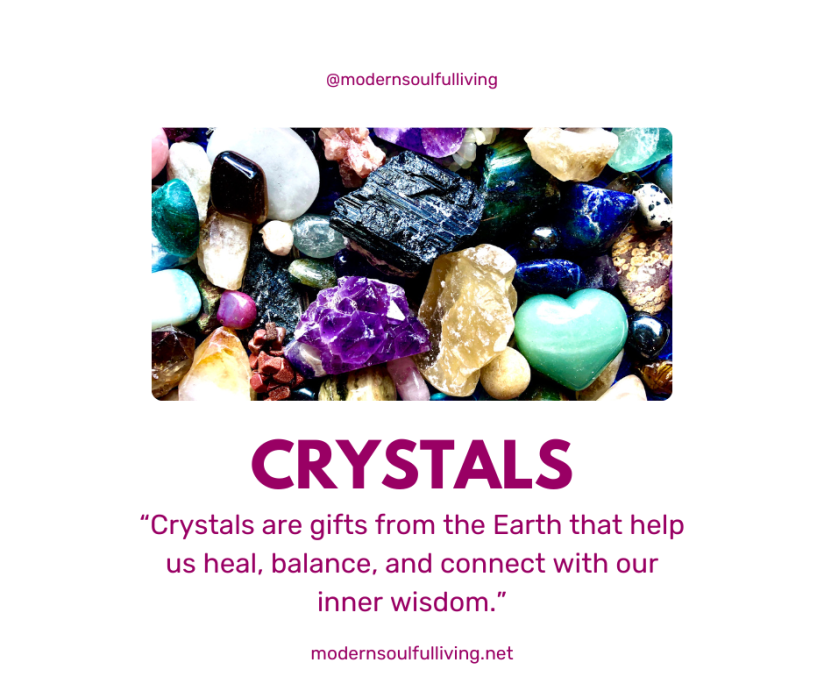Self-discovery is the process of exploring and understanding oneself on a deeper level. It involves uncovering one’s true potential, passions, and purpose in life. Self-discovery is an essential journey that allows individuals to tap into their inner calling and embrace their divine purpose. It is a transformative process that can lead to personal growth, fulfillment, and success.
Embracing one’s inner calling means recognizing and following the unique path that resonates with one’s soul. It involves listening to the whispers of the heart and aligning one’s actions with their true purpose. When individuals embrace their inner calling, they are able to live a life that is authentic and meaningful.
Understanding the Power of Self-Discovery: Unleashing Your True Potential
Self-discovery is a powerful tool for personal growth and development. It allows individuals to gain a deeper understanding of themselves, their strengths, weaknesses, and desires. Through self-discovery, individuals can tap into their true potential and unlock hidden talents and abilities.
When individuals embark on a journey of self-discovery, they are able to identify their passions and interests. This self-awareness enables them to pursue activities and careers that align with their true selves. By doing what they love, individuals are more likely to excel and find fulfillment in their endeavors.
Self-discovery also helps individuals overcome obstacles and challenges. By understanding their strengths and weaknesses, individuals can make informed decisions and take actions that lead to personal growth. They are able to identify areas for improvement and work towards becoming the best version of themselves.
Embracing Your Inner Calling: Unveiling Your Divine Purpose
An inner calling is a deep sense of purpose or mission that comes from within. It is a guiding force that directs individuals towards their divine purpose in life. Embracing one’s inner calling is essential for living a fulfilling and meaningful life.
When individuals embrace their inner calling, they are able to align their actions with their true purpose. They are driven by passion and a sense of mission, which fuels their motivation and determination. By following their inner calling, individuals are more likely to find success and fulfillment in their endeavors.
Identifying and embracing one’s inner calling can be a challenging process. It requires self-reflection, introspection, and a willingness to listen to one’s intuition. It is important to pay attention to the things that bring joy and fulfillment, as well as the activities that make time fly by. These are often indicators of one’s inner calling.
Breaking Free from Limiting Beliefs: Unlocking the Path to Your True Potential
Limiting beliefs are negative thoughts or beliefs that hold individuals back from reaching their true potential. They are often rooted in fear, self-doubt, and societal conditioning. Overcoming limiting beliefs is essential for unleashing one’s true potential and embracing their divine purpose.
Common limiting beliefs include thoughts such as “I’m not good enough,” “I don’t deserve success,” or “I’m too old to start something new.” These beliefs create self-imposed limitations and prevent individuals from taking risks or pursuing their dreams.
To break free from limiting beliefs, individuals must first become aware of them. They can do this by paying attention to their thoughts and questioning the validity of these beliefs. It is important to challenge negative thoughts and replace them with positive affirmations.
Practical steps for breaking free from limiting beliefs include reframing negative thoughts, surrounding oneself with positive influences, and taking small steps towards one’s goals. It is also helpful to seek support from mentors or coaches who can provide guidance and encouragement.
Embracing Change: Embracing Your Divine Purpose and Unleashing Your True Potential
Change is an inevitable part of life, and it plays a crucial role in personal growth and discovering one’s divine purpose. Embracing change is essential for unleashing one’s true potential and living a fulfilling life.
Change often brings new opportunities and experiences. By embracing change, individuals open themselves up to new possibilities and growth. They become more adaptable and resilient, which allows them to navigate through transitions with ease.
To embrace change, individuals must be open-minded and willing to step out of their comfort zones. They must be willing to let go of old patterns and beliefs that no longer serve them. Embracing change requires a mindset shift and a willingness to embrace uncertainty.
Strategies for embracing change include practicing mindfulness, staying curious, and seeking new experiences. It is important to approach change with a positive attitude and view it as an opportunity for growth and self-discovery.
Unleashing Your Unique Gifts: Discovering Your Divine Purpose
Each individual possesses unique gifts and talents that are meant to be shared with the world. These gifts are often connected to one’s divine purpose in life. By identifying and cultivating these unique gifts, individuals can unleash their true potential and live a purposeful life.
Identifying one’s unique gifts requires self-reflection and introspection. It involves exploring one’s passions, interests, and natural abilities. It is important to pay attention to the activities that bring joy and fulfillment, as these are often indicators of one’s unique gifts.
Cultivating one’s unique gifts involves honing skills and developing expertise in a particular area. It requires dedication, practice, and a commitment to continuous learning. By investing time and energy into developing their unique gifts, individuals can unlock their true potential.
Examples of individuals who have embraced their unique gifts include artists who use their creativity to inspire others, teachers who have a passion for education, or entrepreneurs who have a knack for innovation. These individuals have tapped into their unique gifts and found their divine purpose in life.
Cultivating Self-Awareness: Nurturing Your True Potential and Divine Purpose
Self-awareness is the foundation of personal growth and discovering one’s divine purpose. It involves understanding one’s thoughts, emotions, and behaviors. Cultivating self-awareness is essential for nurturing one’s true potential and living a purposeful life.
Self-awareness can be developed through reflection and introspection. It involves taking the time to pause, observe, and understand oneself on a deeper level. This can be done through practices such as journaling, meditation, or seeking feedback from others.
Practical exercises for developing self-awareness include keeping a gratitude journal, practicing mindfulness, or engaging in self-reflection exercises. It is important to be honest with oneself and embrace both strengths and weaknesses.
By cultivating self-awareness, individuals gain a deeper understanding of their values, passions, and desires. They are able to make decisions that align with their true selves and live a life that is authentic and meaningful.
Overcoming Fear and Doubt: Unlocking Your True Potential and Embracing Your Divine Purpose
Fear and doubt are common obstacles that hold individuals back from reaching their true potential and embracing their divine purpose. Overcoming fear and doubt is essential for unlocking one’s true potential and living a purposeful life.
Fear often stems from the unknown or the fear of failure. It can paralyze individuals and prevent them from taking risks or pursuing their dreams. Doubt, on the other hand, is often rooted in self-limiting beliefs or a lack of confidence.
To overcome fear and doubt, individuals must first acknowledge them. They must recognize that fear and doubt are normal emotions that everyone experiences. It is important to reframe negative thoughts and replace them with positive affirmations.
Strategies for overcoming fear and doubt include taking small steps towards one’s goals, seeking support from mentors or coaches, and practicing self-compassion. It is important to remember that failure is a natural part of the learning process and that success often comes from taking risks.
Examples of individuals who have overcome fear and doubt include entrepreneurs who have taken the leap to start their own businesses, athletes who have pushed through physical and mental barriers, or artists who have shared their work with the world. These individuals have faced their fears and doubts head-on and have embraced their divine purpose.
Aligning with Your Core Values: Discovering Your True Potential and Divine Purpose
Core values are the guiding principles that shape an individual’s beliefs, behaviors, and decisions. Aligning one’s actions and decisions with their core values is essential for discovering one’s true potential and embracing their divine purpose.
Core values are deeply personal and unique to each individual. They can include values such as integrity, compassion, creativity, or growth. By living in alignment with core values, individuals are able to make decisions that are authentic and meaningful.
Identifying core values requires self-reflection and introspection. It involves exploring what is truly important to oneself and what brings a sense of fulfillment. It is important to prioritize core values and make choices that align with them.
Living in alignment with core values requires conscious decision-making and a commitment to staying true to oneself. It may involve making difficult choices or stepping away from situations that do not align with one’s values. However, living in alignment with core values leads to a life that is authentic and fulfilling.
Embracing Personal Growth: Unlocking Your Divine Purpose and Unleashing Your True Potential
Personal growth is an ongoing process that is essential for discovering one’s divine purpose and unleashing true potential. It involves continuous learning, self-reflection, and a commitment to improvement.
Embracing personal growth means being open to new experiences, challenges, and opportunities for learning. It involves seeking feedback from others, being willing to step out of one’s comfort zone, and embracing change.
Strategies for embracing personal growth include setting goals, seeking new experiences, and investing in self-development. It is important to view personal growth as a lifelong journey and to approach it with curiosity and a growth mindset.
By embracing personal growth, individuals are able to continuously evolve and become the best version of themselves. They are able to tap into their true potential and live a purposeful life.
Living Authentically: Embracing Your Divine Purpose and Unlocking Your True Potential
Living authentically means being true to oneself and embracing one’s divine purpose. It involves aligning one’s actions, beliefs, and values with their true selves. Living authentically is essential for discovering one’s divine purpose and unlocking true potential.
Living authentically requires self-awareness and a willingness to be vulnerable. It involves embracing one’s strengths and weaknesses, as well as accepting oneself fully. By living authentically, individuals are able to show up as their true selves in all areas of life.
Practical advice for living authentically includes practicing self-compassion, setting boundaries, and surrounding oneself with supportive and like-minded individuals. It is important to listen to one’s intuition and trust oneself.
Living authentically leads to fulfillment and success. When individuals live in alignment with their true selves, they are able to make choices that bring them joy and fulfillment. They are able to pursue their passions and live a life that is meaningful.
Conclusion
Self-discovery is a transformative journey that allows individuals to tap into their true potential and embrace their divine purpose. By understanding oneself on a deeper level, individuals can identify their passions, strengths, and values. They can break free from limiting beliefs, overcome fear and doubt, and embrace change.
Embracing one’s inner calling means recognizing and following the unique path that resonates with one’s soul. It involves aligning one’s actions with their true purpose and living authentically. By embracing personal growth and living in alignment with core values, individuals can unleash their unique gifts and talents.
I encourage you to embark on your own journey of self-discovery and embrace your divine purpose. Take the time to reflect, explore your passions, and listen to your intuition. Embrace change, overcome fear and doubt, and live authentically. Remember that personal growth is a lifelong journey, and that by embracing it, you can unlock your true potential and live a purposeful life.










You must be logged in to post a comment.